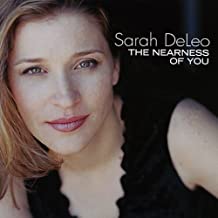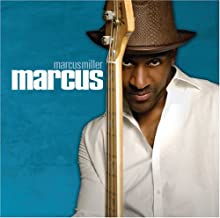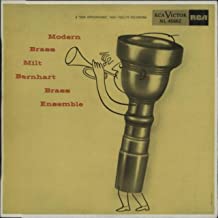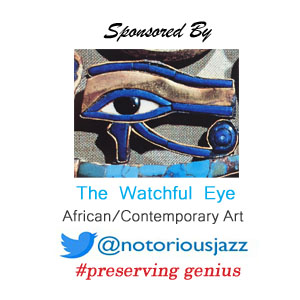
Daily Dose Of Jazz…
Alex Welsh was born on July 9, 1929 in Edinburgh, Scotland, Welsh and started playing in the teenage Leith Silver Band and with Archie Semple’s Capital Jazz Band. After a move to London in the early 1950s, he formed a band with clarinetist Archie Semple, pianist Fred Hunt, trombonist Roy Crimmins, and drummer Lenny Hastings. The band played a version of Chicago-style Dixieland jazz and was part of the traditional jazz revival in England in the 1950s.
In the 1960s, Welsh’s band played with Earl Hines, Red Allen, Peanuts Hucko, Pee Wee Russell, and Ruby Braff. During that period and into the early 1970s, Welsh frequently toured, including many visits to the United States. Influenced by his fellow trad jazz bandleader Chris Barber, he built up an extensive musical repertoire, working from popular music, jazz, and a large mainstream following for ensembles.
Welsh recorded under the Decca Record label from 1955 and had four records released that year, I’ll Build A Stairway To Paradise, Blues My Naughtie Sweetie Gives To Me, and What Can I Say After I Say I’m Sorry, and Dixielanders. Although none of these recordings charted, he found some success with the single Tansy from the film No My Darling Daughter.
In 1963 he was part of the biggest trad jazz event in Britain and would go on to tour internationally, playing festivals on both the American and European continents. He was a regular in the early 1970s, playing clubs around London and having continued success as a vocalist and playing Dixieland, and trad jazz. Singer, bandleader, cornetist, and trumpeter Alex Welsh passed away on June 25, 1982 in Hillingdon Hospital in London, England, at the age of 52.
More Posts: bandleader,cornet,history,instrumental,jazz,music,trumpet,vocal

Daily Dose Of Jazz…
Sarah DeLeo was born in Waterbury, Connecticut on June 21st and grew up listening to a wide range of music, from Motown to Elvis, and from Linda Ronstadt to Donna Summer. She began singing at age nine and was singing standards before she even started high school. Studying the great singers such as Judy Garland, Barbra Streisand, Ella Fitzgerald, and Aretha Franklin had a great influence on her developing her own style. Her further study of the jazz idiom included listening to Miles Davis, John Coltrane, Dexter Gordon, and Sarah Vaughan.
Attending Barnard College as an American Studies major, she always maintained her love for the music and continued performing whenever possible. Not a product of the conservatory system, Sarah received her jazz schooling the old-fashioned way in the New York City clubs. After college, she began singing in jam sessions and in piano bars throughout Manhattan where she became a regular.
Invaluable guidance came from singer/songwriter Lina Koutrakos where she developed her skills as a lyric interpreter. She has also studied with jazz musicians Jay Clayton, Dena DeRose, Giacomo Gates, and Kirk Nurock. Sarah’s repertoire consists of jazz and pop standards from the 1920s through the 1960s. 2005 saw her recording and releasing her debut CD, The Nearness of You, to critical acclaim and an introduction to both national and international audiences. Deleo’s sophomore release came in 2009 with I’m In Heaven Tonight, that combined old and new songs including a swinging version of the indie rock duo The White Stripes In The Cold, Cold Night. Taking the best from the masters and combining it with her own signature style vocalist Sarah DeLeo continues to deliver the lyric performing, recording, and touring.
More Posts: bandleader,history,instrumental,jazz,music,vocal

Daily Dose Of Jazz…
Marcus Miller, born William Henry Marcus Miller Jr. on June 14, 1959 in Brooklyn, New York and raised in a musical family. Classically trained as a clarinetist, he also plays keyboards, saxophone and guitar. He began to work regularly in New York City, eventually playing bass and writing music for jazz flutist Bobbi Humphrey and keyboardist Lonnie Liston Smith.
Spending 15 years as a session musician, he arranged and produced frequently, was a member of the Saturday Night Live band from 1979 to 1981, and co-wrote Aretha Franklin’s Jump To It along with Luther Vandross. He has played bass on over 500 recordings, appearing on over 500 albums by such artists as Herbie Hancock, The Crusaders, Wayne Shorter, McCoy Tyner, Frank Sinatra, George Benson, Michael Jackson, Beyoncé, Mariah Carey, Eric Clapton, Dr. John, Aretha Franklin, Elton John, Joe Walsh, Jean-Michel Jarre, Grover Washington Jr., Donald Fagen, Bill Withers, Bernard Wright, Kazumi Watanabe, Chaka Khan, LL Cool J, and Flavio Sala.
He won the Most Valuable Player award given by NARAS to recognize studio musicians three years in a row and was subsequently awarded Player Emeritus status and retired from eligibility. In the nineties, Miller began to write his own music and make his own records, putting a band together and touring regularly.
Between 1988 and 1990 he appeared regularly both as a musical director and as the house band bass player in the Sunday Night Band during two seasons of Sunday Night on NBC late-night television, hosted by David Sanborn.
As a composer, Miller co-wrote and produced several songs on the Miles Davis album Tutu, including its title track. He also composed Chicago Song for David Sanborn and co-wrote ‘Til My Baby Comes Home, It’s Over Now, For You To Love, and Power of Love for Luther Vandross and wrote Da Butt, which was featured in Spike Lee’s School Daze.
Miller hosts a jazz history show called Miller Time with Marcus Miller, is a film score composer, was nominated and won several Grammy Awards. Bassist Marcus Miller continues to perform, record and tour.
More Posts: bass,clarinetist,guitar,history,instrumental,jazz,keyboards,music,saxophone,vocal

Daily Dose Of Jazz…
Milt Bernhart was born on May 25, 1926 in Valparaiso, Indiana and began on tuba but switched to trombone in high school. At 16 he worked in Boyd Raeburn’s band and later had some gigs with Teddy Powell. After time in the Army he worked, off and on, with Stan Kenton for the next ten years. In 1955 Bernhart recorded his first album as a leader. In 1986 he was elected President of the Big Band Academy of America.
Although known as mild-mannered or humorous, he spent a brief period with Benny Goodman, who brought out his ire. He indicated working with Goodman was “the bottom” of his first 23 years of life, except for basic training in the Army. He called Goodman a bore and claimed he did nothing about the treatment Wardell Gray faced at a segregated club in Las Vegas and he even alleges that he quit because Goodman publicly humiliated Gray in front of an audience.
The West Coast jazz trombonist recorded more than a hundred albums as a sideman working with Maynard Ferguson, Henri Rene, Shorty Rogers, Pete Rugolo, Howard Rumsey, Lalo Schifrin, Chet Baker, Sammy Davis Jr., June Christy, Astrud Gilberto, Peggy Lee, Johnny Mandel, and Henry Mancini among numerous others.
He recorded with Frank Sinatra, supplying the solo in the middle of Sinatra’s 1956 recording of I’ve Got You Under My Skin conducted by Nelson Riddle. Trombonist Milt Bernhart passed away from congestive heart failure at the Adventist Health in Glendale, California at the age of 77 on January 22, 2004.
More Posts: bandleader,history,instrumental,jazz,trombone

Daily Dose Of Jazz…
Louis Landon was born on May 6, 1931 in Yonkers, New York and began studying piano at age five, playing classical compositions. Shortly afterward his parents got him piano lessons. In 1960 his family relocated to Studio City, California where his father, Leo De Lyon, is the voice actor best known as Brain and Spook in the popular television cartoon, Top Cat.
In the early 1970s, Landon transferred from Stony Brook University to Berklee College of Music in Boston, Massachusetts to pursue his studies in jazz. While playing in and around Boston, Landon met saxophonist, John Payne, and toured with the John Payne Band for three years from 1974 to1977. During that period they recorded four albums, to which he contributed his songwriting skills, and incorporate a jazz fusion style into their sound and opened for Weather Report, The Tony Williams Lifetime, John McLaughlin.
Leaving Boston for Manhattan, he formed a jazz fusion band called Nightfire, and did studio work and freelanced around New York City. During the late 1970s, Landon auditioned for and landed the position of the keyboardist in the John Hall band. Appearing on Hall’s Columbia Records LP, Power, he subsequently began touring with composer and pop singer Rupert Holmes. He toured extensively during the course of the next few years across the country with Hall and Holmes as well as Mikhail Baryshnikov and Pucho & His Latin Soul Brothers.
He has also performed with The Doobie Brothers, Bonnie Raitt, and John Hall at the 1979 No Nukes concert that produced a triple live album released in 1980 that Landon is credited on as a keyboard player.
Composer, solo pianist for peace, singer-songwriter, recording artist, and touring musician from New York City, Louis Landon currently resides in Sedona, Arizona.
More Posts: bandleader,history,instrumental,jazz,music,piano,singer,songwriter




